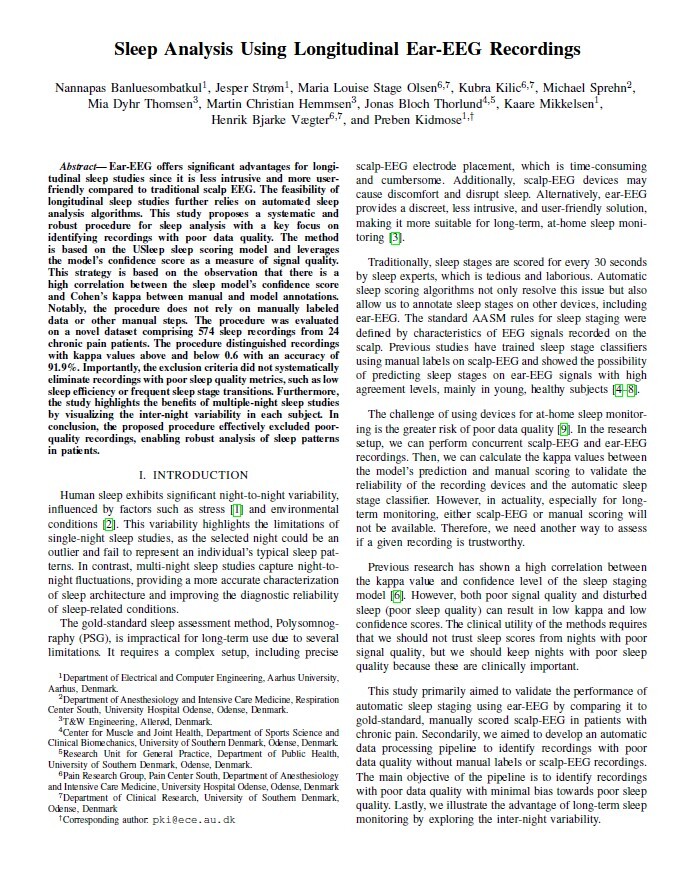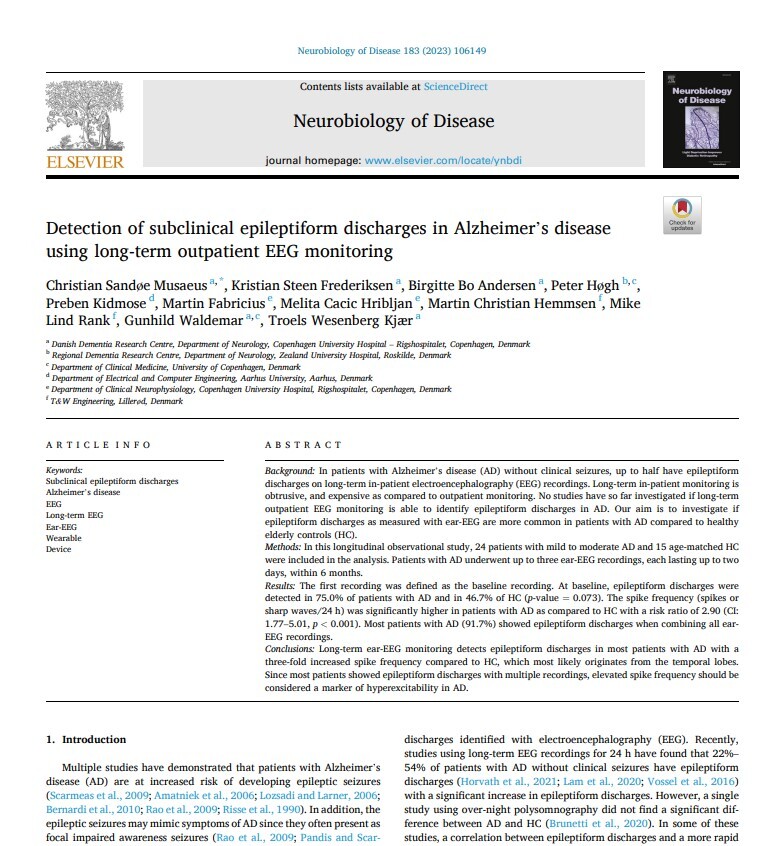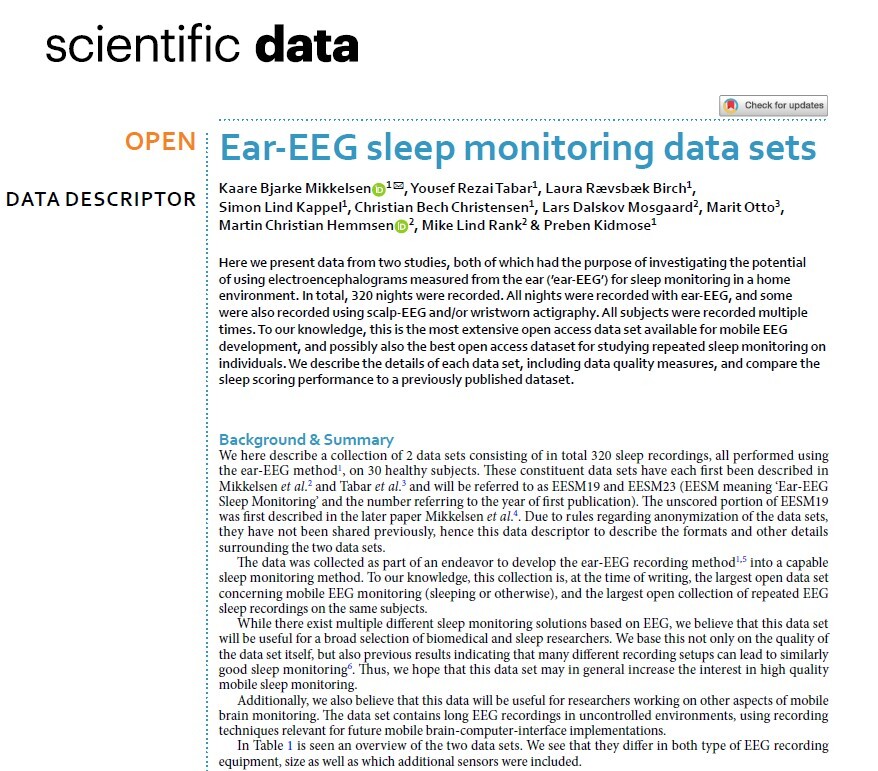Sleep Analysis Using Longitudinal Ear-EEG Recordings
Ear-EEG offers significant advantages for longitudinal sleep studies since it is less intrusive and more userfriendly compared to traditional scalp EEG. The feasibility of longitudinal sleep studies further relies on automated sleep analysis algorithms. This study proposes a systematic and robust procedure for sleep analysis with a key focus on identifying recordings with poor data quality. The method is based on the USleep sleep scoring model and leverages the model’s confidence score as a measure of signal quality.This strategy is based on the observation that there is a high correlation between the sleep model’s confidence score and Cohen’s kappa between manual and model annotations. Notably, the procedure does not rely on manually labeled data or other manual steps. The procedure was evaluated on a novel dataset comprising 574 sleep recordings from 24 chronic pain patients. The procedure distinguished recordings with kappa values above and below 0.6 with an accuracy of 91.9%. Importantly, the exclusion criteria did not systematically eliminate recordings with poor sleep quality metrics, such as low sleep efficiency or frequent sleep stage transitions. Furthermore, the study highlights the benefits of multiple-night sleep studies by visualizing the inter-night variability in each subject. In conclusion, the proposed procedure effectively excluded poorquality recordings, enabling robust analysis of sleep patterns in patients.
Detection of subclinical epileptiform discharges in Alzheimer’s disease
using long-term outpatient EEG monitoring
Background: In patients with Alzheimer’s disease (AD) without clinical seizures, up to half have epileptiform discharges on long-term in-patient electroencephalography (EEG) recordings. Long-term in-patient monitoring is obtrusive, and expensive as compared to outpatient monitoring. No studies have so far investigated if long-term outpatient EEG monitoring is able to identify epileptiform discharges in AD. Our aim is to investigate if epileptiform discharges as measured with ear-EEG are more common in patients with AD compared to healthy elderly controls (HC).
Methods: In this longitudinal observational study, 24 patients with mild to moderate AD and 15 age-matched HC were included in the analysis. Patients with AD underwent up to three ear-EEG recordings, each lasting up to two days, within 6 months.
Results: The first recording was defined as the baseline recording. At baseline, epileptiform discharges were detected in 75.0% of patients with AD and in 46.7% of HC (p-value = 0.073). The spike frequency (spikes or sharp waves/24 h) was significantly higher in patients with AD as compared to HC with a risk ratio of 2.90 (CI: 1.77–5.01, p < 0.001). Most patients with AD (91.7%) showed epileptiform discharges when combining all ear-EEG recordings.
Conclusions: Long-term ear-EEG monitoring detects epileptiform discharges in most patients with AD with a three-fold increased spike frequency compared to HC, which most likely originates from the temporal lobes. Since most patients showed epileptiform discharges with multiple recordings, elevated spike frequency should be considered a marker of hyperexcitability in AD.
Ear-EEG sleep monitoring data sets
Here we present data from two studies, both of which had the purpose of investigating the potential
of using electroencephalograms measured from the ear (’ear-EEG’) for sleep monitoring in a home
environment. In total, 320 nights were recorded. All nights were recorded with ear-EEG, and some
were also recorded using scalp-EEG and/or wristworn actigraphy. All subjects were recorded multiple
times. To our knowledge, this is the most extensive open access data set available for mobile EEG
development, and possibly also the best open access dataset for studying repeated sleep monitoring on individuals. We describe the details of each data set, including data quality measures, and compare the sleep scoring performance to a previously published dataset.


